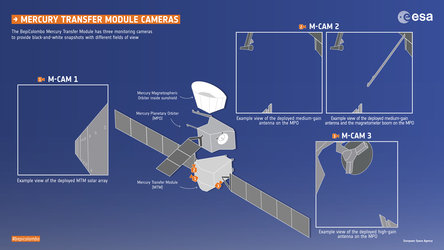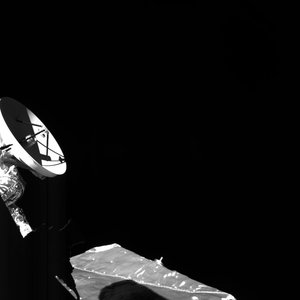Accept all cookies Accept only essential cookies See our Cookie Notice

About ESA
The European Space Agency (ESA) is Europe’s gateway to space. Its mission is to shape the development of Europe’s space capability and ensure that investment in space continues to deliver benefits to the citizens of Europe and the world.
Highlights
ESA - United space in Europe
This is ESA ESA facts Member States & Cooperating States Funding Director General Top management For Member State Delegations European vision European Space Policy ESA & EU Space Councils Responsibility & Sustainability Annual Report Calendar of meetings Corporate newsEstablishments & sites
ESA Headquarters ESA ESTEC ESA ESOC ESA ESRIN ESA EAC ESA ESAC Europe's Spaceport ESA ESEC ESA ECSAT Brussels Office Washington OfficeWorking with ESA
Business with ESA ESA Commercialisation Gateway Law at ESA Careers Cyber resilience at ESA IT at ESA Newsroom Partnerships Merchandising Licence Education Open Space Innovation Platform Integrity and Reporting Administrative Tribunal Health and SafetyMore about ESA
History ESA Historical Archives Exhibitions Publications Art & Culture ESA Merchandise Kids Diversity ESA Brand Centre ESA ChampionsLatest
Space in Member States
Find out more about space activities in our 23 Member States, and understand how ESA works together with their national agencies, institutions and organisations.
Science & Exploration
Exploring our Solar System and unlocking the secrets of the Universe
Go to topicAstronauts
Missions
Juice Euclid Webb Solar Orbiter BepiColombo Gaia ExoMars Cheops Exoplanet missions More missionsActivities
International Space Station Orion service module Gateway Concordia Caves & Pangaea BenefitsLatest
Space Safety
Protecting life and infrastructure on Earth and in orbit
Go to topicAsteroids
Asteroids and Planetary Defence Asteroid danger explained Flyeye telescope: asteroid detection Hera mission: asteroid deflection Near-Earth Object Coordination CentreSpace junk
About space debris Space debris by the numbers Space Environment Report In space refuelling, refurbishing and removingSafety from space
Clean Space ecodesign Zero Debris Technologies Space for Earth Supporting Sustainable DevelopmentLatest
Applications
Using space to benefit citizens and meet future challenges on Earth
Go to topicObserving the Earth
Observing the Earth Future EO Copernicus Meteorology Space for our climate Satellite missionsCommercialisation
ESA Commercialisation Gateway Open Space Innovation Platform Business Incubation ESA Space SolutionsLatest
Enabling & Support
Making space accessible and developing the technologies for the future
Go to topicBuilding missions
Space Engineering and Technology Test centre Laboratories Concurrent Design Facility Preparing for the future Shaping the Future Discovery and Preparation Advanced Concepts TeamSpace transportation
Space Transportation Ariane Vega Space Rider Future space transportation Boost! Europe's Spaceport Launches from Europe's Spaceport from 2012Latest

Monitoring camera checkout
Thank you for liking
You have already liked this page, you can only like it once!
How many times have you taken a selfie and posted it instantly to your favourite social media channel? The Mercury Transfer Module of the BepiColombo spacecraft, currently en route to Mercury, is equipped with three ‘selfie-cams’ and this morning captured a series of snapshots and subsequently posted them to its Twitter account.
The images were taken on 17 June between 04:13 UT and 04:51 UT and downlinked to Earth at around 07:20 UT.
The monitoring cameras take black-and-white images in 1024 x 1024 pixel resolution. The cameras point in three different directions, capturing one of the transfer module’s 15 m-long solar arrays (left), and the medium (middle) and high-gain (right) antennas attached to the Mercury Planetary Orbiter. The third spacecraft module, the Mercury Magnetospheric Orbiter, cannot be seen in these views.
After launch last October the monitoring cameras were used to view the deployed structural elements, and since then are used to visually record changes – for example if commands are sent to rotate the solar arrays or to change the pointing of the high-gain antenna, which is oriented towards Earth.
MCAM-3 is used most frequently, to monitor the rotation of the high-gain antenna. In December, MCAM-1 was used to capture a rotation sequence of the MTM’s solar arrays. Given MCAM-1 and -2 had not been used for several months, the images presented here were taken as a simple checkout of the cameras and made quickly available to share on ESA’s channels.
While the Mercury Planetary Orbiter is equipped with a high-resolution scientific camera, this can only be operated after separating from the Mercury Transfer Module upon arrival at Mercury in late 2025 because, like several of the 11 instrument suites, it is located on the side of the spacecraft fixed to the transfer module during cruise.
Check out this 3D tool to view the attitude of the spacecraft, including simulated views from each of the monitoring cameras.
BepiColombo launched from Europe’s Spaceport in Kourou on an Ariane 5 on 19 October 2018 (20 October European time). It is a joint endeavour between ESA and the Japan Aerospace Exploration Agency, JAXA. It is the first European mission to Mercury, the smallest and least explored planet in the inner Solar System, and the first to send two spacecraft – ESA’s Mercury Planetary Orbiter and JAXA’s Mercury Magnetospheric Orbiter – to make complementary measurements of the planet and its dynamic environment at the same time.
-
CREDIT
ESA/BepiColombo/MTM -
LICENCE
CC BY-SA 3.0 IGO or ESA Standard Licence
(content can be used under either licence)

BepiColombo monitoring cameras

BepiColombo snaps a close-up of Mercury

Turning BepiColombo’s high-gain antenna

Turning BepiColombo’s high-gain antenna















 Germany
Germany
 Austria
Austria
 Belgium
Belgium
 Denmark
Denmark
 Spain
Spain
 Estonia
Estonia
 Finland
Finland
 France
France
 Greece
Greece
 Hungary
Hungary
 Ireland
Ireland
 Italy
Italy
 Luxembourg
Luxembourg
 Norway
Norway
 The Netherlands
The Netherlands
 Poland
Poland
 Portugal
Portugal
 Czechia
Czechia
 Romania
Romania
 United Kingdom
United Kingdom
 Slovenia
Slovenia
 Sweden
Sweden
 Switzerland
Switzerland
























